Cause of death Aircraft crash Nationality French | Name Roland Garros Role Aviator | |
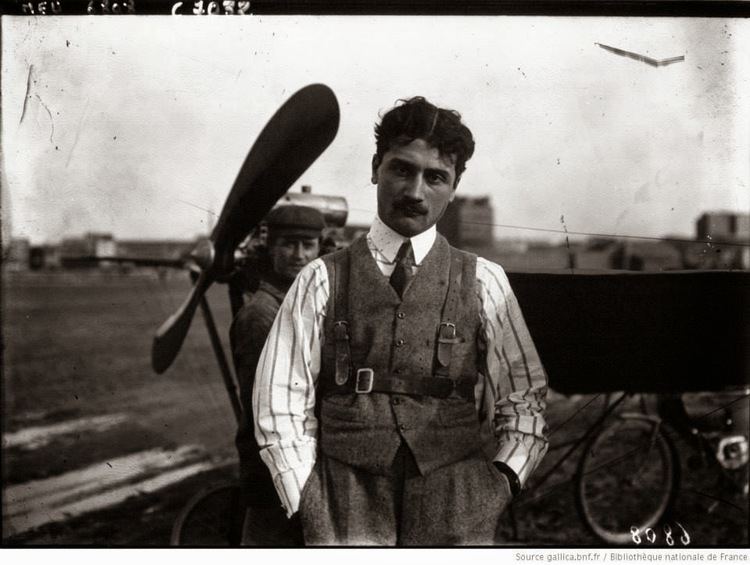 | ||
Full Name Eugene Adrien Roland Georges Garros Born 6 October 1888 ( 1888-10-06 ) Saint-Denis, Reunion, France Awards Chevalier de la Legion d'honneur (1913)
Officier de la Legion d'honneur (1918) Died October 5, 1918, Vouziers, France Parents Clara Faure, Georges Garros Education Lycee Janson de Sailly, HEC Paris Resting place Vouziers, Ardennes, France Similar People Manfred von Richthofen, Anthony Fokker, Jean Cocteau | ||
Eugène Adrien Roland Georges Garros ([ʁɔlɑ̃ ɡaʁɔs]; 6 October 1888 – 5 October 1918) was an early French aviator and a fighter pilot during World War I.
Contents
- Biography
- Myth of first air battle
- Development of interrupter gear
- After internment in a POW camp
- Death
- Legacy
- Places named after Roland Garros
- References
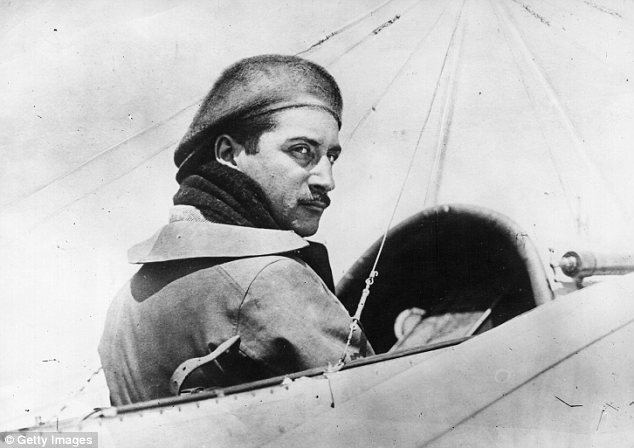
Biography
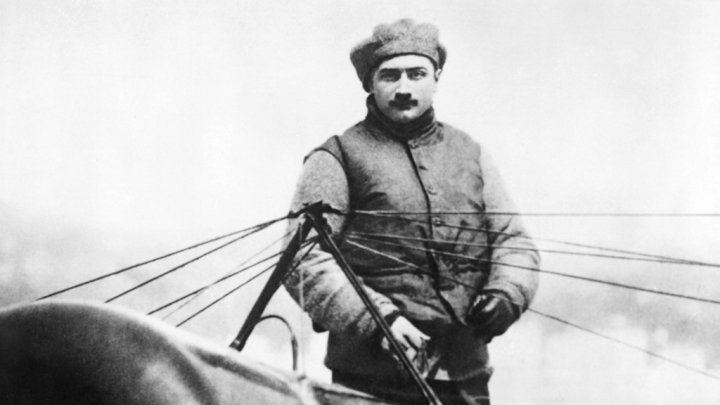
Eugène Adrien Roland Georges Garros was born in Saint-Denis, Réunion, and studied at the Lycée Janson de Sailly and HEC Paris. He started his aviation career in 1909 flying a Demoiselle (Dragonfly) monoplane, an aircraft that only flew well with a small lightweight pilot. He gained Ae.C.F. licence no. 147 in July 1910. In 1911 Garros graduated to flying Blériot monoplanes and entered a number of European air races with this type of machine, including the 1911 Paris to Madrid air race and the Circuit of Europe (Paris-London-Paris), in which he came second.
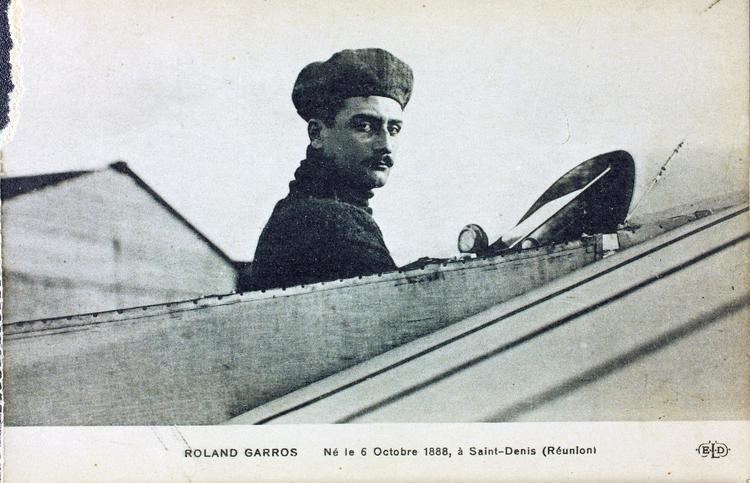
On 4 September 1911, he set an altitude record of 3,950 m (12,960 ft). The following year, on 6 September 1912, after Austrian aviator Philipp von Blaschke had flown to 4,360 m (14,300 ft), he regained the height record by flying to 5,610 m (18,410 ft).
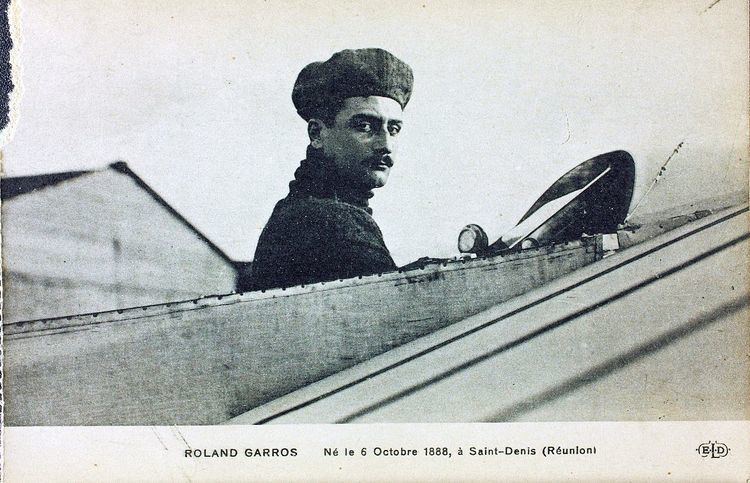
By 1913 he had switched to flying the faster Morane-Saulnier monoplanes, and gained fame for making the first non-stop flight across the Mediterranean Sea from Fréjus in the south of France to Bizerte in Tunisiain a Morane-Saulnier G. The following year, Garros joined the French army at the outbreak of World War I.
Myth of first air battle

Reports published in August 1914 claimed Garros was involved in the "first air battle in world history" and that he had flown his plane into a Zeppelin, destroying the airship and killing its pilots and himself. This story was quickly contradicted by reports that Garros was alive and well in Paris. Such early reports maintained that an unidentified French pilot had indeed rammed and destroyed a Zeppelin , however, German authorities refuted the story. Later sources indicated the first aerial victory against a Zeppelin occurred in June 1915 and that earlier reports, including that of Garros, had been discredited.
Development of interrupter gear

In the early stages of the air war in World War I the problem of mounting a forward-firing machine gun on combat aircraft was considered by a number of individuals. The so-called "interrupter gear" did not come into use until Anthony Fokker developed a synchronization device which had a large impact on air combat; however, Garros also had a significant role in the process of achieving this goal.
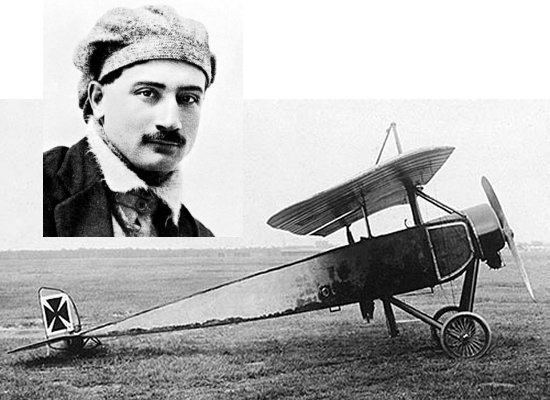
As a reconnaissance pilot with the Escadrille MS26, Garros visited the Morane-Saulnier Works in December 1914. Saulnier's work on metal deflector wedges attached to propeller blades was taken forward by Garros; he eventually had a workable installation fitted to his Morane-Saulnier Type L aircraft. The Aero Club of America awarded him a medal for this invention three years later. Garros achieved the first ever shooting-down of an aircraft by a fighter firing through a tractor propeller, on 1 April 1915; two more victories over German aircraft were achieved on 15 and 18 April 1915.

On 18 April 1915, either Garros's fuel line clogged or, by other accounts, his aircraft was downed by ground fire, and he glided to a landing on the German side of the lines. Garros failed to destroy his aircraft completely before being taken prisoner: most significantly, the gun and armoured propeller remained intact. Legend has it that after examining the plane, German aircraft engineers, led by Fokker, designed the improved interrupter gear system. In fact the work on Fokker's system had been going for at least six months before Garros's aircraft fell into their hands. With the advent of the interrupter gear the tables were turned on the Allies, with Fokker's planes shooting down many Allied aircraft, leading to what became known as the Fokker Scourge.
After internment in a POW camp
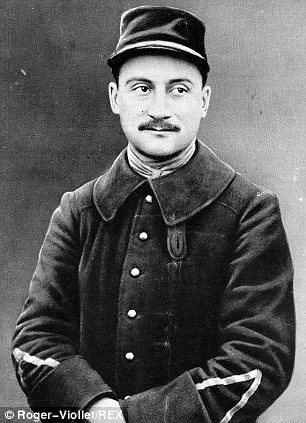
Garros finally managed to escape from a POW camp in Germany on 14 February 1918, after several attempts, and rejoined the French army. He settled into Escadrille 26 to pilot a Spad, and claimed two victories on 2 October 1918, one of which was confirmed.
Death
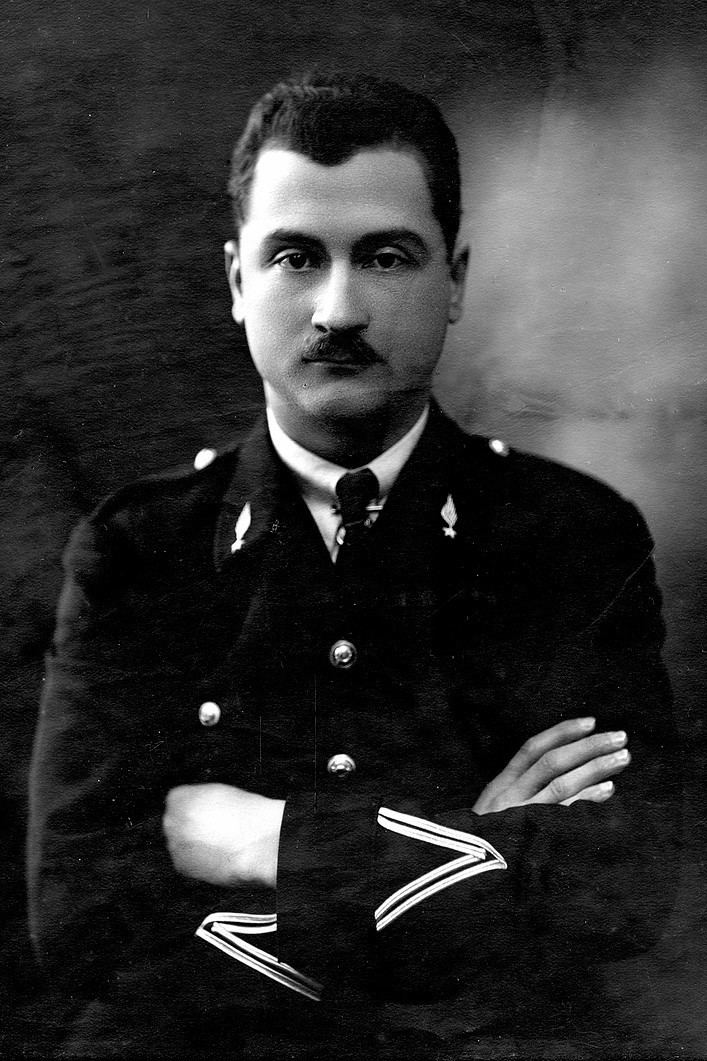
On 5 October 1918, he was shot down and killed near Vouziers, Ardennes, a month before the end of the war and one day before his 30th birthday. His adversary was probably German ace Hermann Habich from Jasta 49.
Legacy
Garros is erroneously called the world's first fighter ace. In fact, he shot down only four aircraft; the definition of "ace" is five or more victories. The honour of becoming the first ace went to another French airman, Adolphe Pégoud.
Places named after Roland Garros
A tennis centre, which he attended religiously when he was studying in Paris, was named after him in the 1920s, the Stade de Roland Garros. The stadium accommodates the French Open, one of the four Grand Slam tennis tournaments. Consequently, the tournament is officially called Les internationaux de France de Roland-Garros (the "French Internationals of Roland Garros").
According to Vũ Trọng Phụng's urban novel Dumb Luck (1936), during colonial times the Hanoi government named the city's main tennis stadium after Roland Garros.
The international airport of La Réunion, Roland Garros Airport, is also named after him. The place where he landed in Bizerte is called place of Roland Garros.
The French car manufacturer Peugeot commissioned a 'Roland Garros' limited edition version of its 205 model in celebration of the tennis tournament that bears his name. The model included special paint and leather interior. Because of the success of this special edition, Peugeot later created Roland Garros editions of its 106, 108, 206, 207, 208, 306, 307, 406, and 806 models.
